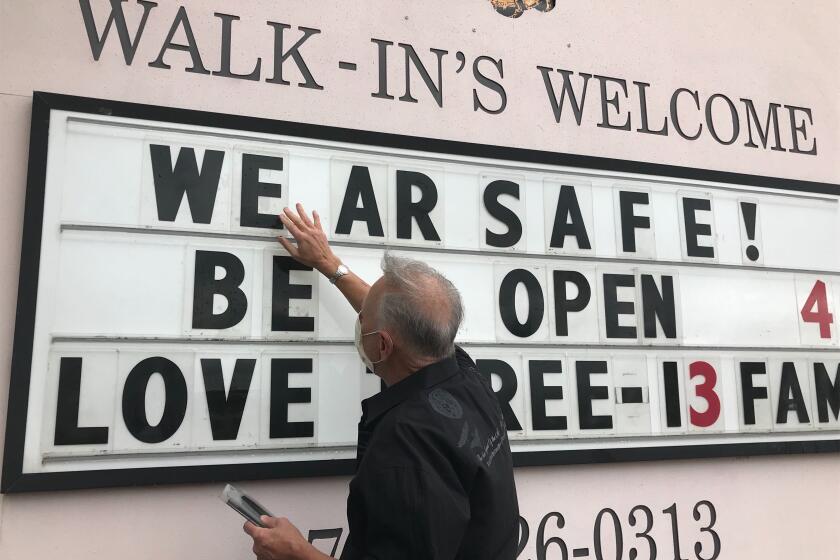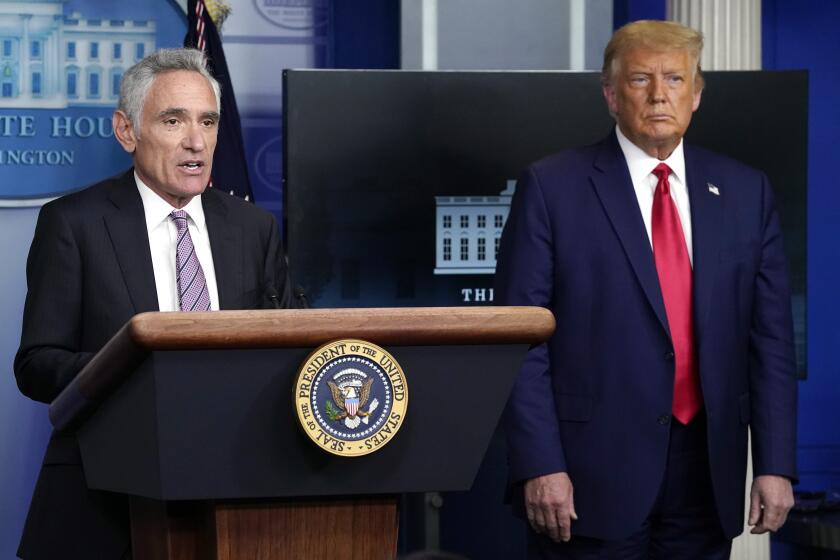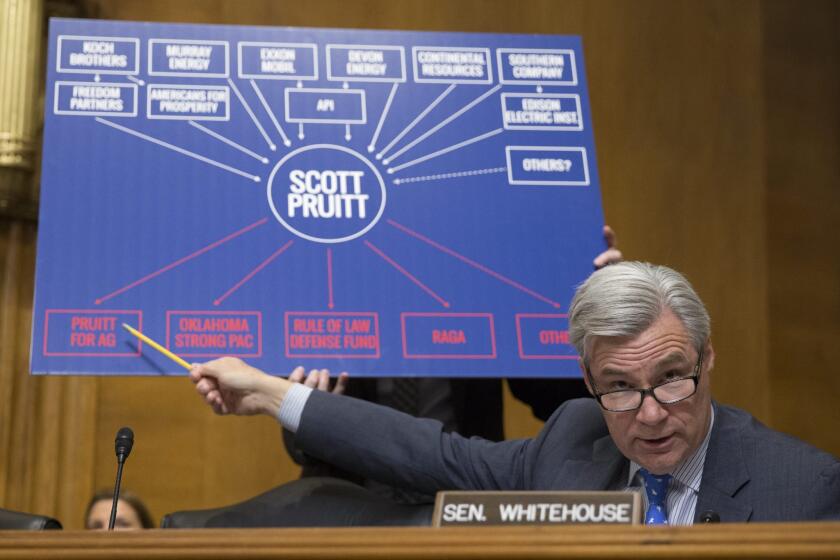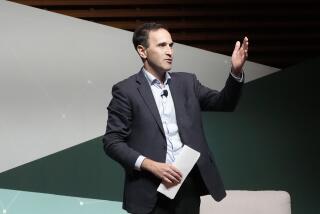Column: The lab-leak origin claim for COVID-19 is in the news, but it’s still fact-free
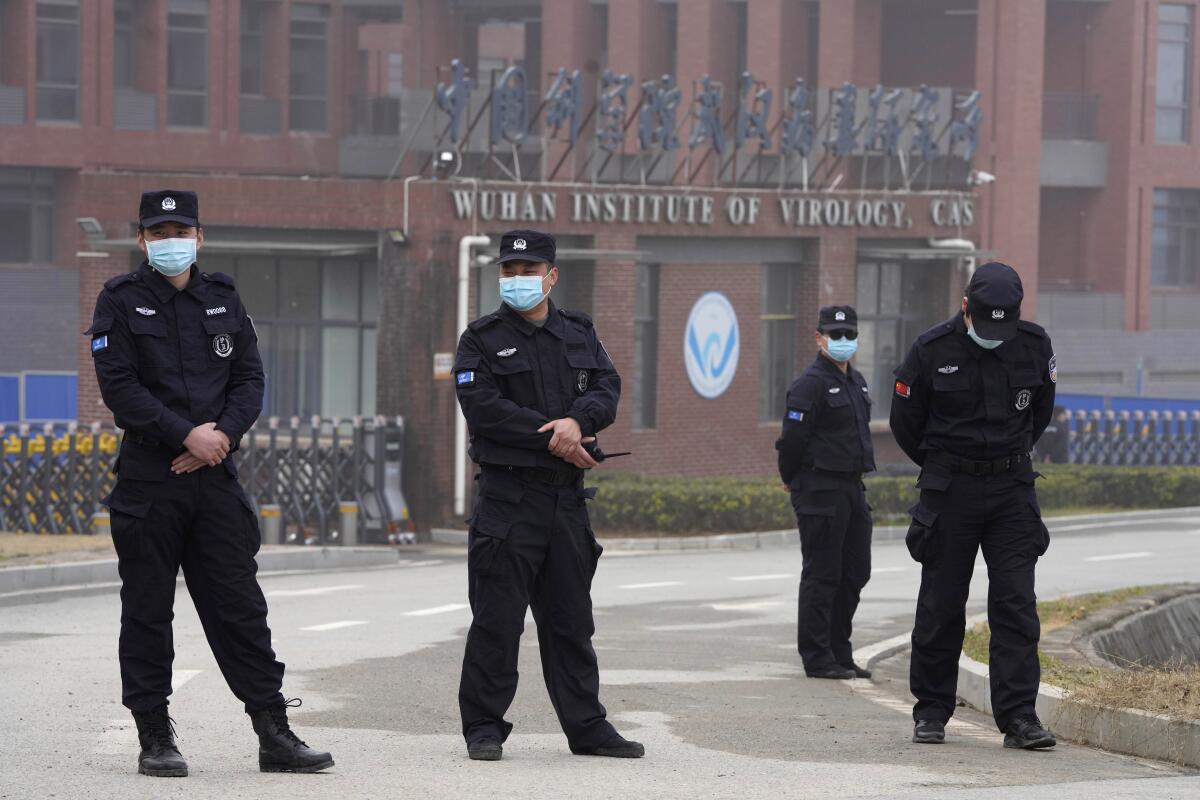
- Share via
A corollary to the scientific truism that “nature abhors a vacuum” is that nature tends to fill the void with any garbage near at hand.
For example, consider the surge of interest in the claim that the coronavirus reached the outside world through a release — accidental or deliberate — from a virus laboratory in Wuhan, China.
The “lab leak hypothesis,” as it’s known to virologists, is experiencing a heyday. Long dismissed by many experts, it’s now being taken more seriously as one of two general possibilities for COVID-19’s origin, along with the theory that the virus reached humans through contact with animal hosts.
Follow the animals. That’s where we’re going to find the origin of COVID-19.
— Tulane virologist Robert F. Garry
In a May 14 letter in the magazine Science, 18 eminent experts urged that “a transparent, objective, data-driven” investigation be undertaken of both theories to achieve “greater clarity about the origins of this pandemic.” Their letter was directed to the World Health Organization, which in April labeled the laboratory origin of COVID-19 “extremely unlikely.”
Further, President Biden on May 26 gave federal intelligence agencies 90 days to provide him “the most up-to-date analysis of the origins of COVID-19, including whether it emerged from human contact with an infected animal or from a laboratory accident.”
Get the latest from Michael Hiltzik
Commentary on economics and more from a Pulitzer Prize winner.
You may occasionally receive promotional content from the Los Angeles Times.
The new speculation about the origins of COVID-19 has caused some stock-taking by the press, which is accused of ridiculing the lab-leak theory in all its manifestations during 2020 merely because it was promoted by President Trump.
That’s treated as another strike against the “liberal media” supposedly marching in lock-step to disdain conservatives. The mainstream press, wrote Jonathan Chait of New York Magazine, “took Donald Trump’s bait, answering the former president’s dissembling with false certainty of their own.”
What’s missing from all this reexamination and soul-searching is a fundamental fact: There is no evidence — not a smidgen — for the claim that COVID-19 originated in a laboratory in China or anywhere else, or that the China lab ever had the virus in its inventory. There’s even less for the wildest version of the claim, which is that the virus was deliberately engineered. There never has been, and there isn’t now.
No one disputes that a lab leak is possible. Viruses have escaped from laboratories in the past, on occasion leading to human infection. But “zoonotic” transfers — that is, from animals to humans — are a much more common and well-documented pathway.
With the pandemic ebbing across the US, the debate over lockdowns continues -- but the evidence shows they worked.
That’s why the virological community believes that it’s vastly more likely that COVID-19 spilled over from an animal host to humans.
That was the conclusion reached in a seminal paper on COVID-19’s origins published in Nature in February 2020 by American, British and Australian virologists. “We do not believe that any type of laboratory-based scenario is plausible,” they wrote.
“We cannot prove that SARS-CoV-2 [the COVID-19 virus] has a natural origin and we cannot prove that its emergence was not the result of a lab leak,” the lead author of the Nature paper, Kristian Andersen of the Scripps Research Institute in La Jolla, told me by email.
“However, while both scenarios are possible, they are not equally likely,” Andersen said. “Precedence, data, and other evidence strongly favor natural emergence as a highly likely scientific theory for the emergence of SARS-CoV-2, while the lab leak remains a speculative incomplete hypothesis with no credible evidence.”
Coauthor Robert F. Garry of Tulane Medical School told several colleagues during a recent webcast: “Our conclusion that it didn’t leak from the lab is even stronger today than it was when we wrote the paper.”
As the veteran pseudoscience debunker David Gorski sums up the contest between the lab-leak and zoonotic theories, “the likelihood of the two hypotheses is nowhere near close to equal.”
What remains of the lab-leak theory is half-truths, misrepresentations, and tendentious conjecture.
Consider one trigger of heightened speculation, a May 23 article in the Wall Street Journal reporting that three researchers at the Wuhan Institute of Virology, which is located in the community where the first major outbreak was identified, became sick enough in the fall of 2019 to seek hospital treatment. That was months before the start of the pandemic.
Yet the report offered no evidence linking the patients’ illness to COVID-19 research at the Wuhan lab. The report said the researchers had “symptoms consistent with both COVID-19 and common seasonal illness.” Well, yes: The Centers for Disease Control and Prevention advises that the symptoms of COVID and seasonal flu resemble each other.
There’s no evidence that the three researchers had contracted COVID-19 as opposed to flu or any other virus. Nor is there information about the clinical outcome of these three cases, which might tell us more.
Virologists point out, moreover, that it would be unlikely for COVID to affect only three people seriously enough to warrant hospital care without infecting hundreds of others in the lab or their households. The other victims might have had milder symptoms, but an outbreak of that magnitude would have been difficult to keep under wraps.
Florida Gov. DeSantis is running a victory lap over his COVID-19 response as the press plays along.
As for the letter in Science, some of its 18 signatories have taken pains to emphasize that they are not endorsing the lab-leak theory; some are highly skeptical of the hypothesis.
The organizer of the letter, David Relman of Stanford, told Nature’s Amy Maxmen, “I am not saying I believe the virus came from a laboratory.” Another signatory, Ralph S. Baric of the University of North Carolina, told the New Yorker, “The genetic sequence for SARS-CoV-2 really points to a natural-origin event from wildlife.”
Their goal in signing the letter, they said, was not to point fingers at the Wuhan lab, but to urge WHO to devote more effort to determining the origin, whatever it might be, before expressing a categorical opinion.
Biden’s directive to the intelligence agencies has been taken as a virtual endorsement of the laboratory origin claim. For example, the Financial Times headlined its report on the directive, “How Biden came around to the lab-leak theory.”
Even a cursory reading of the directive shows that Biden didn’t “come around” to the lab-leak theory. His directive is resolutely neutral about COVID’s origin; it’s consistent with interest in a conclusion that the virus originated in a lab, but also with a desire to put that speculation to rest.
Let’s take a look at the science underlying the search for COVID’s origins. One important fact is that we may never get a definitive answer. The animal source of the Ebola virus, which was first identified 45 years ago, is still unknown, Maxmen reported in Nature.
Maxmen noted that it took researchers 14 years to trace the 2002-2004 outbreak of severe acute respiratory syndrome, or SARS, to a virus that leapt from bats to humans.
But the history of virological outbreaks points strongly toward a “zoonotic” transfer of the COVID-19 virus — that is, from animals to humans.
“There is an extensive history of pathogen emergence by natural means: most novel viral pathogens that have caused epidemics or pandemics in the human population have emerged naturally from a wildlife reservoir,” Angela Rasmussen of the Center for Global Health Science and Security at Georgetown University wrote in January.
Stanford’s relationship with the Hoover Institution has always been touchy. The COVID-19 pandemic has made it worse.
“The overwhelming conclusion is that this virus, too, found its way into a human host through a series of unhappy accidental encounters with animals,” Rasmussen observed.
The virus that causes COVID-19, moreover, is known as an opportunistic virus that has little trouble passing among species — “pantropic,” in virological jargon.
For a laboratory leak to have occurred secretly or inadvertently would require “a massive conspiracy and cover-up involving a lot of people, including some very accomplished scientists, not telling the truth about what they were working on or what they had,” Garry told me.
The lab-leak theory gains from a superficial plausibility — especially to laypersons. The Wuhan lab had a collection of bat viruses, including some that appear to be similar to the coronavirus that causes COVID-19.
But some virologists say they’re not similar enough to mutate into SARS-CoV-2, even through deliberate manipulation, Garry says. “That’s a point that’s not going to resonate very strongly with people who haven’t studied viruses for a long, long time.”
The assertion that the press was too quick to disdain the lab-leak theory because it was touted by ideologically suspect sources — Trump and Sens. Tom Cotton and Rand Paul, among others — overlooks a few pertinent factors.
Nearly every day brings a new report of a federal agency told to shut down communications with the public or even members of Congress; tweets about important topics such as climate change removed from the public record; bans on talking to the press.
One is that these individuals were not merely ideologically suspect, but known promoters of falsehoods. It would have been unwise and imprudent to suddenly treat them as truth tellers, especially since their lies had often been targeted at China for political reasons. The idea that China had concealed its lab’s role in the pandemic dovetailed well with policies aimed at painting China as an untrustworthy economic and political actor.
Trump administration officials such as David Asher, who conducted an inquiry on COVID-19’s origins for former Secretary of State Mike Pompeo, have been pushing the report of the three sick Wuhan researchers.
Asher is quoted in both the Wall Street Journal’s report and the Financial Times article on Biden’s directive, and has pushed the lab-leak theory on Fox News.
Another reason for journalistic skepticism was that many professional virologists labeled the lab-leak theory as implausible from the first. This was because the theory presupposed a complex series of events coming together just so — secrecy, coordination, even deliberate malevolence, abetted by extreme sloppiness.
Advocates of the lab-leak theory point to the location of the Wuhan Institute of Virology, in the same community as the first known outbreak. But they overlook the magnitude of China’s trade in wildlife for food and traditional medicine, among other uses — including in and around Wuhan.
As my colleague Alice Su reported last year, the breeding and sale of animals such as civet cats and pangolins, which are considered possible intermediary carriers of COVID-19 on its path from bats to humans, is a $73-billion industry in China.
That makes it even larger than the beef industry in the United States, which is valued at nearly $70 billion. Regulation of Chinese breeders and traders is light and rife with corruption.
Determining the origins of COVID-19 may not be important to address the current pandemic, which can only be done through public health stratagems. But it’s important for policies to deal with the next pandemics, since policies will be different for outbreaks that start with animal-human contacts and those originating in poor laboratory security.
There’s an argument for getting more accountability out of China about its handling of the viral outbreak in its earliest stages. But there’s also an argument against pointing fingers at the Chinese regime or its scientific establishment without evidence: China’s cooperation will be crucial for world health in the future, and it’s less likely to happen if China feels it has been unjustly blamed for COVID-19.
“The lab-leak hypothesis is taking the oxygen out of what’s really needing to be done, which is cooperating with China,” Garry told his colleagues on the recent webcast.
“Follow the animals,” he said. “That’s where we’re going to find the origin of COVID-19.”
More to Read
Get the latest from Michael Hiltzik
Commentary on economics and more from a Pulitzer Prize winner.
You may occasionally receive promotional content from the Los Angeles Times.

